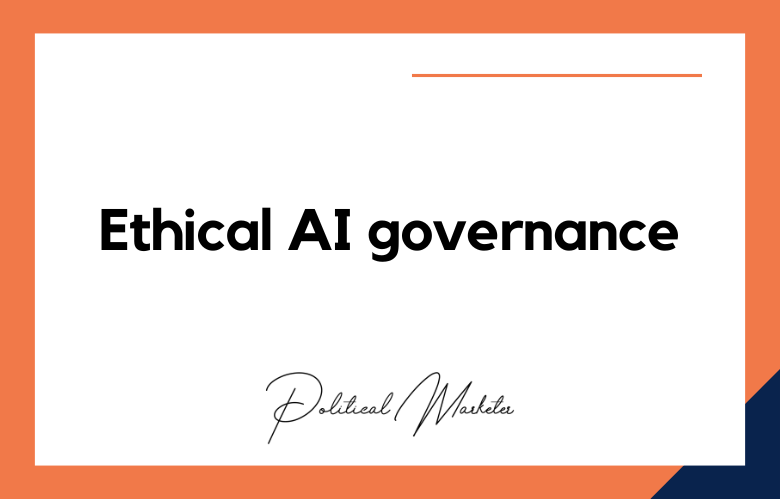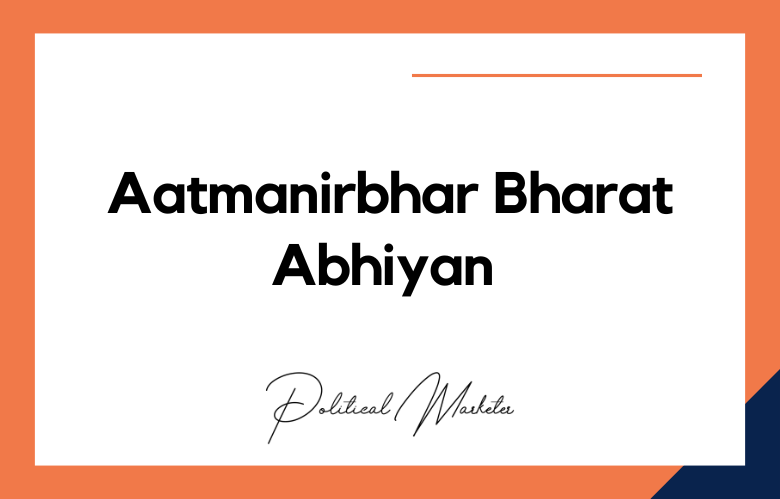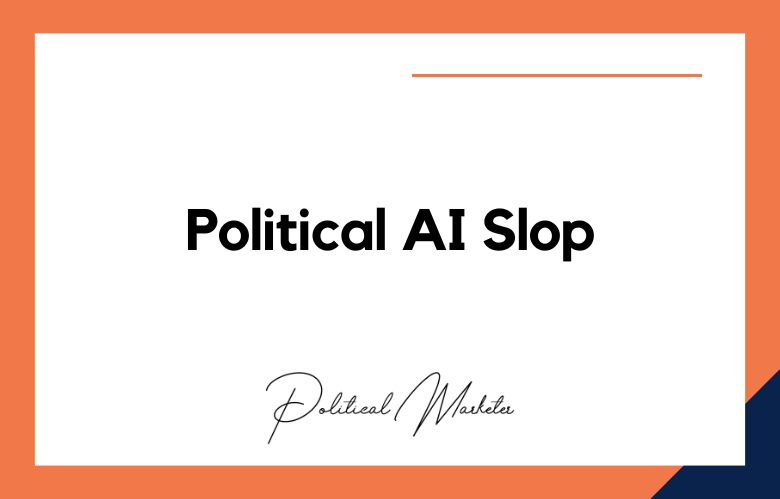In the recent past, political micro-segmentation has been a popular topic amongst marketers and advertisers as they look to gain insight from social media data.
To achieve this goal, brands must be able to recognize patterns in user behavior.
Big Data is one of the essential tools that businesses can use because it has helped tailor services based on their preferences.
With increased access to information through platforms like Facebook and Twitter, marketers can analyze consumer trends more accurately than ever – especially when combined with Artificial Intelligence (AI).
We will discuss how these two technologies can be used together for effective political micro-segmentation.
What are big data and artificial Intelligence?
Big data is a type of data that businesses collect from customers. This might include the customer’s name, address, email address, or login information. Artificial Intelligence is considered to be a computer with human-like behavior and learning capabilities.
Big data is becoming increasingly popular since it can gather and analyze massive amounts of information. Artificial Intelligence can be used to train computers to do things that generally come more naturally for humans.
Artificial Intelligence is based on computer models that can mimic human behavior, like learning or decision-making.
Big data and artificial Intelligence are often confused. Many people think they’re the same thing, but they aren’t!
The most exciting new technology is big data. It’s a way to analyze massive amounts of information, used for everything from business to science.
AI is a broad set of methods for making computers more intelligent and performing tasks like reasoning, learning, and self-correction.
Artificial Intelligence is a computer’s ability to perform tasks associated with human behavior, such as learning and problem-solving.
What is Big Data, and how do we understand the political landscape?
Big data and its applications will tell us what we need to know about the political world.
Big data becomes difficult to process using traditional database management tools. Big Data has been used extensively in business for a long time, but its use in politics has only recently come under scrutiny.
Big data is a collection of information that can be used to study various aspects of human behavior. Specifically, it can help us understand political trends.
Big data is an essential methodology in political forecasting. It allows analysts to predict voting trends accurately and even identify areas likely to swing for any given party.
How has AI played a role in politics, specifically for micro-segmentation
We use AI for micro-segmentation to help determine the best method of communication with each voter. We do this using natural language processing, which allows us to understand voters’ interests by analyzing their words.
Politicians have previously targeted their messages through TV and social media networks. While this still exists today, things have changed because of AI.
Information is central to most political debates, and with that information comes power. AI supercharges information because it enables better decisions, which leads to more freedom. This will be a significant factor in politics as we move forward.
Artificial Intelligence has played an essential role in politics, especially in micro-segmentation.
AI has played a significant role in politics, particularly in micro-segmentation. Political parties use Facebook ads and Google Adwords to target specific groups of voters with political propaganda.
AI can assist politicians in identifying the best possible messages that resonate with different groups of people.
The advantages of using artificial Intelligence to make more informed decisions
- AI can analyze and process data much faster than humans, meaning it will make more informed decisions in the same time.
- AI is unbiased and has no preconceived notions or prejudices that may influence decision-making.
- AI has access to all of the information you could want, such as your browsing history on Google, Facebook posts, Amazon orders, etc., which means it knows what you like and doesn’t like
- There’s no need for human error when using AI.
- Artificial Intelligence is an effective way to make more informed decisions because it can quickly process large amounts of data.
- Artificial Intelligence reduces the need for humans to perform repetitive tasks.
- Using artificial Intelligence in business will allow companies to save money by hiring fewer employees.
- AI can process and understand information quicker than humans, allowing them to make decisions more quickly.
- AI can analyze data in a way impossible for humans- they can consider every possible scenario.
- The use of AI has been shown to increase productivity by up to 40%
- AI has the potential to improve customer service by reducing wait times.
- AI can be used to make decisions where there are a large number of options
- AI is more accurate than humans when it comes to making predictions and recommendations
- AI can help with decision-making in a variety of fields, from healthcare to business
- Artificial Intelligence has been found to reduce the time taken for tasks significantly.
- Artificial Intelligence can process large amounts of data quickly
- AI can make decisions based on past experiences instead of relying on intuition or guesswork
- AI can help us plan for the future by predicting what will happen in certain situations
- AI can learn from its mistakes and then adjust accordingly
- Artificial Intelligence allows businesses to understand their customers’ needs better.
Artificial Intelligence and its limitations compared to human decision-making.
AI is an impressive technology. It can tackle some of the most complex problems, from climate change to curing cancer. But it’s not a panacea that will instantly solve all our problems and make humanity a genuinely utopian society.
Usually, people can make decisions independently and figure out how to solve a problem without help. This ability is called intuition.
AI is not meant to replace human decision-making but rather augment it.
The benefits of using Big Data and Artificial Intelligence to micro-segment voters
- Big Data and Artificial Intelligence can be used to identify patterns in voter behavior.
- This data allows for the micro-segmentation of voters.
- Micro-segmentation divides a population into smaller subsets with similar characteristics, needs, or behaviors.
- The goal is to create more effective marketing messages that appeal to specific groups based on their demographic profile.
- The data can predict a voter’s likelihood of voting for a particular candidate.
- Proprietary algorithms can find patterns in the data that humans cannot see on their own
- Data is collected from social media, polling, and public records
- Artificial Intelligence is then used to analyze this information and make predictions about voters
- Use data to identify the right voters
- Use AI to micro-segment votes
- Send personalized messages based on voter preferences
- Micro-segment votes to maximize the likelihood of success
- Identify segments that are more likely to vote for your candidate or campaign
- Use data and AI to pinpoint specific messages that will resonate with each segment
- Micro-segment votes using Big Data and Artificial Intelligence
- Eliminate voter fraud by analyzing the type of phone they use to cast their vote
- Use AI algorithms to examine voters’ profiles for demographic information, political affiliation, voting history, etc.
- Send personalized campaign messages based on what is relevant to each individual.
Conclusion
This opened up a new world for campaign strategists, who now have access to more information about their voters and those they hope to attract.
Contact us today if you’re looking for an edge in your next election or want help from experts on how best to extract value from this technology.
We specialize in helping organizations leverage AI and Big Data technologies to better understand their customers and potential ones.
Big Data and Artificial Intelligence for Political Micro-Segmentation: FAQs
What Is Political Micro-Segmentation in Digital Campaigns?
Political micro-segmentation involves dividing the electorate into narrow, highly specific groups based on behavioral, psychographic, and demographic data to deliver targeted political messaging.
How Does Political Micro-Segmentation Differ from Traditional Segmentation?
Unlike traditional segmentation that uses broad categories like age or gender, micro-segmentation goes deeper by analyzing individual behavior, beliefs, and lifestyle choices for hyper-personalized outreach.
Why Is Political Micro-Segmentation Important in Modern Elections?
It allows political parties to craft personalized messages, increase voter engagement, and drive conversions by appealing to individual motivations and concerns.
What Data Sources Are Used for Political Micro-Segmentation?
Data is collected from social media activity, browsing behavior, voter registration records, consumer databases, and survey responses.
How Do Political Campaigns Create Effective Micro-Segments?
Campaigns use AI and machine learning to analyze large datasets, identify patterns, and group voters based on shared traits, values, or online behavior.
What Role Does Psychographic Profiling Play in Micro-Segmentation?
Psychographic profiling helps campaigns understand voters’ values, personality traits, and emotional drivers, which informs message tone and content.
Can Micro-Segmentation Influence Voter Turnout?
Yes, by addressing individual concerns and interests, micro-segmentation can motivate disengaged voters and boost participation.
Is Political Micro-Segmentation Used for Both Persuasion and Mobilization?
Yes, campaigns use it to persuade undecided voters and mobilize existing supporters with messages tailored to their unique profiles.
How Does Micro-Segmentation Enhance Political Ad Targeting?
It ensures that ads are shown to the right people at the right time with the most resonant message, increasing ROI and engagement.
Are There Tools That Assist in Political Micro-Segmentation?
Yes, platforms like NationBuilder, Aristotle, and custom-built voter analytics tools help campaigns implement micro-segmentation strategies.
How Does Micro-Segmentation Affect Message Personalization?
It allows for tailoring messages to individual values, life stages, or specific concerns like healthcare, economy, or education.
What Is an Example of Micro-Segmentation in Indian Politics?
Targeting first-time urban voters with aspirational messaging while reaching rural female voters with welfare-centric narratives.
What Is the Impact of Micro-Segmentation on Campaign Strategy?
It shifts campaign focus from mass messaging to highly personalized digital outreach, improving efficiency and voter relevance.
Can Micro-Segmentation Be Integrated With WhatsApp and SMS Campaigns?
Yes, segments can be used to push targeted messages through WhatsApp, SMS, and other mobile-based platforms with high open rates.
How Do Campaigns Monitor Micro-Segment Performance?
They use A/B testing, analytics dashboards, and engagement metrics to refine targeting and messaging strategies in real-time.
Is Political Micro-Segmentation Ethical?
Its ethical use depends on transparency, consent, and avoiding manipulation or misinformation based on voter vulnerabilities.
How Do Parties Ensure Data Privacy in Micro-Segmentation?
By complying with data protection laws, using anonymized data, and maintaining clear policies on data usage and consent.
What Are the Risks of Over-Reliance on Micro-Segmentation?
Over-targeting can fragment messaging, alienate broad audiences, and miss the chance to build unifying political narratives.
How Does Micro-Segmentation Adapt During Campaign Cycles?
Segments are constantly updated based on voter behavior, feedback loops, and real-time data from digital touchpoints.
What Future Trends Are Emerging in Political Micro-Segmentation?
Trends include deeper integration with AI, predictive analytics, emotion recognition, and cross-platform behavioral syncing.
One way to get in touch is by filling out our online form on this site or give us a call at +91 9848321284. Let’s work together today!











